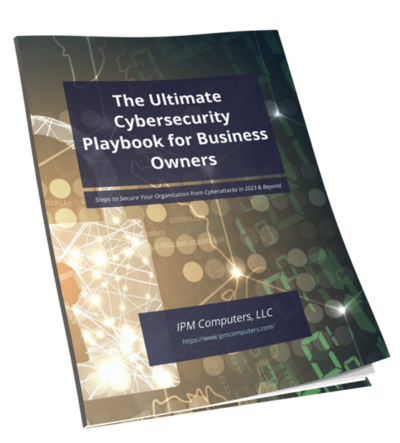The break-fix IT model works reactively, fixing problems only after they occur. While this may seem like a cost-effective approach initially, it can actually lead to significant hidden costs that threaten business stability.
On the other hand, Myrtle Beach managed services have become a popular proactive solution. By offering continuous support and monitoring, outsourced IT in Myrtle Beach helps prevent issues from escalating into expensive problems.
It’s important to understand the hidden costs of break-fix IT to make informed decisions. Key factors to consider include:
- Unplanned downtime
- Emergency repair fees
- Lost productivity
Understanding the Break-Fix Model
Break-Fix IT Support refers to a reactive IT model where services are provided only after a problem occurs. This approach is characterized by:
- On-Demand Repairs: IT support is engaged when issues arise, leading to potential delays in resolving critical problems.
- Variable Costs: Expenses fluctuate based on incidents, making budgeting unpredictable.
Common myths about cost savings associated with the break-fix model include:
- “It’s Cheaper”: Many believe that paying for repairs as needed is more economical than a subscription-based model. In reality, emergency service fees can accumulate quickly, often surpassing the costs of proactive management.
- “Flexibility is Better”: While break-fix offers greater control over when and how you spend on IT, it inadvertently leads to increased maintenance expenses and cybersecurity risks.
In certain scenarios, break-fix may suit businesses with minimal IT needs, such as:
- Small Startups: Companies with limited technology requirements may find this model sufficient.
- Budget-Conscious Organizations: Businesses looking to minimize upfront costs might initially favor break-fix.
The Hidden Costs That Can Sabotage Your Business
Downtime can devastate a business, resulting in significant financial losses. Studies indicate that SMBs can face costs exceeding $100,000 per hour during unexpected outages. This staggering figure highlights the critical importance of minimizing downtime through effective IT management.
Emergency Labor Fees and Overtime Costs
In a break-fix model, companies often encounter emergency labor fees and overtime costs. When a system fails, you may need immediate support to address the issue. These urgent repairs can lead to inflated bills that catch businesses off guard. For example:
- Emergency service calls typically have higher hourly rates.
- Overtime charges for technicians working outside regular hours can exponentially increase repair costs.
These unforeseen expenses not only strain your budget but also contribute to a reactive cycle that disrupts business operations. Beyond downtime and emergency fees, several other hidden costs can erode your finances:
- Lost Productivity: Employees unable to access essential systems experience delays in completing tasks. This lost time translates directly into lost revenue.
- Compliance Penalties: Businesses operating in regulated sectors must adhere to compliance standards. Downtime or data breaches may lead to penalties or legal repercussions, further compounding financial strain.
- Cybersecurity Incidents: The average cost of a data breach now stands at approximately $4.35 million. Break-fix models often lack proactive security measures, leaving organizations vulnerable to significant threats.
Why Managed Services Are a Cost-Effective Solution
Instead of waiting for problems to happen and then fixing them, managed services focus on preventing issues before they occur. This proactive approach helps businesses save money by avoiding costly downtime and disruptions.
Financial Comparison
Let’s take a closer look at how the break-fix model stacks up against managed services when it comes to costs.
Break-Fix Model
- Involves unpredictable costs tied to emergency repairs.
- Companies often face sudden expenses that strain budgets.
Managed Services
- Operate on predictable monthly fees, allowing for better financial planning.
- Provide a clear understanding of IT costs, eliminating surprise expenses.
Return on Investment
Investing in managed services offers significant advantages over the break-fix model. Here are some key factors that contribute to higher ROI:
Reduced Downtime
- Proactive monitoring minimizes outages, ensuring business continuity.
- Studies show that downtime can cost SMBs upwards of $100k per hour; managed services mitigate these risks.
Increased Productivity
- With fewer disruptions, employees can focus on their tasks rather than dealing with IT issues.
- This leads to enhanced efficiency across the organization.
Enhanced Cybersecurity Measures
- Managed service providers (MSPs) implement robust security protocols, reducing vulnerability to cyber threats.
- Given that the average data breach costs $4.35 million, investing in cybersecurity through managed services is crucial.
Improved Operational Efficiency
- Streamlined processes and optimized systems reduce wasted resources and time.
- MSPs often provide strategic planning aligned with business goals, further enhancing productivity.
The combination of predictable costs and high returns makes managed services an essential investment for businesses seeking stability and growth. Transitioning from a break-fix model not only safeguards against hidden costs but also positions companies for long-term success.
Making the Shift Towards Managed Services
Transitioning to Managed IT requires careful planning and assessment. Here are steps you can take to evaluate your current IT challenges:
1. Conduct a Comprehensive IT Audit
- Identify existing hardware and software.
- Evaluate current performance and uptime.
- Assess security measures in place.
2. Identify Pain Points
- Document recurring issues or downtimes.
- Recognize areas where productivity suffers due to IT constraints.
- Prioritize problems based on their impact on business operations.
3. Establish Clear Objectives
- Define what you want to achieve with managed services (e.g., improved security, reduced downtime).
- Set measurable goals for performance improvement.
When it comes to evaluating potential MSPs, consider these tips:
Expertise and Experience
- Look for MSPs with a proven track record in your industry.
- Check client testimonials and case studies for insights into their effectiveness.
Responsiveness
- Assess their customer support availability (24/7 is ideal).
- Evaluate response times during initial inquiries.
Scalability
- Ensure the MSP can grow with your business needs.
- Inquire about customizable service plans that align with your objectives.
Addressing Common Misconceptions About Managed Services
Many businesses have misconceptions about MSPs that can hinder their decision-making process. Understanding these misunderstandings is essential for making informed choices.
1. Only for Large Enterprises
A prevalent myth is that managed services are only suitable for large organizations. SMBs benefit significantly from MSPs, as they provide scalable solutions tailored to varying needs.
2. Exorbitant Costs
Another common belief is that managed services come with high costs compared to break-fix models. While initial perceptions may suggest otherwise, the predictable monthly fees of MSPs often result in lower overall IT expenses when considering hidden costs associated with break-fix support.
3. Loss of Control
Many fear that engaging an MSP means relinquishing control over their IT systems. On the contrary, effective partnerships with MSPs enhance your oversight through transparent reporting and strategic planning.
Embracing a Proactive Approach to IT Support is Key for Long-Term Success
Businesses need to understand how important it is to change their IT strategies. Switching to managed services has many benefits that match the future trends in IT support.
Here are some things to consider:
- Assessment of Current Strategies: Look at your current IT setup and find any weak points.
- Cost-effective IT Management: Managed services offer a pricing model that you can predict, getting rid of surprise costs that come with the break-fix model.
- Long-Term Benefits: Better cybersecurity measures lower the chances of expensive data breaches and compliance fines.
- Scalability: As your business expands, managed services can adjust to your requirements without major extra costs.
Choosing proactive IT support not only reduces the hidden costs of break-fix IT but also prepares your business for long-lasting success. Make strategic planning a priority and put money into solutions that promote efficiency and resilience.
Frequently Asked Questions About IT
What is the break-fix IT model?
The break-fix IT model is a reactive approach to IT support where services are provided only when issues arise. This model often leads to unexpected costs and downtime, as businesses wait for problems to occur before seeking help.
What are the hidden costs associated with break-fix IT?
Hidden costs in the break-fix IT model can include significant downtime leading to financial losses, emergency labor fees for urgent repairs, lost productivity, compliance penalties, and potential cybersecurity incidents like data breaches, which can average around $4.35 million.
How do managed services differ from break-fix IT?
Managed services offer a proactive approach to IT support, providing continuous monitoring and maintenance for a predictable monthly fee. This contrasts with the break-fix model, which incurs costs reactively as issues arise.
What factors should businesses consider when transitioning to managed services?
Businesses should assess their current IT challenges and evaluate potential managed service providers based on expertise, experience, responsiveness, and how well they align with the business’s specific needs.
Are managed services only suitable for large enterprises?
No, this is a common misconception. Myrtle Beach tech support can be beneficial for businesses of all sizes by providing cost-effective solutions tailored to their specific needs and ensuring better operational efficiency.
How can managed services lead to higher ROI?
Managed services can provide a higher return on investment by reducing downtime through proactive maintenance, increasing productivity with efficient IT operations, enhancing cybersecurity measures, and improving overall operational efficiency.






